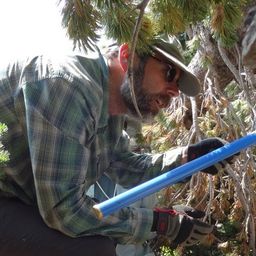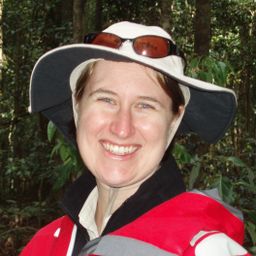Symposium 4. Dendrogeochemistry ‘moving beyond potential’
My Session Status
In their book chapter in 2011 Gagen et al. (2011) highlighted the need for stable isotope dendroclimatology to move beyond studies that simply demonstrate ‘potential’. This symposium, more than a decade since this publication, will focus on dendrogeochemical studies that demonstrate that the field has moved beyond studies focused on ‘potential’. In particular, this session will strive to identify compelling new insights into unique aspects of reconstructions that can be developed through the use of dendrogeochemical records. We also welcome submissions that present multi-proxy studies including isotopes to highlight the advantages that can be gained by expanding our dendroclimatological toolbox.
This symposium should thus serve to stimulate new advances and collaborations by showing how geochemical records from tree-rings can be used as a valuable tool in ways that serve to complement or enhance what can be gained through traditional ring width-based dendroclimatology.
Tree ring stable isotopes, for example, can record different, or stronger, climate signals than those available from traditional tree-ring proxies, do not require detrending, and thus can provide a more comprehensive view of past climates. New high resolution radiocarbon studies from tree rings have improved our ability to date archaeological material, as well as provided insight into past cosmogenic events, finally providing evidence of the elusive solar signals originally sought by A.E. Douglass. Advances in dendrogeochemistry of mercury, and other heavy elements has provided important insight into historic patterns of atmospheric pollution, wildfire and volcanic activities. This session aims to demonstrate to the tree-ring community how far beyond potential dendrogeochemistry has come.
Sub Sessions
The use of multiple data from tree-rings, including isotopic ratios and xylogenesis monitoring, can enhance our interpretations on tree functioning and on tree-environment relations. Here, we explored whether understanding of carbon deposition to tree-rings could be improved using: (1) monitoring of wood cell formation during the growing season, (2) intra-annual data of d13C in tree-ring cellulose and (3) ecophysiological modelling. We collected wood micro-cores to monitor wood cell format...
Recent droughts have highlighted concerns of how rising summer temperatures will increase tree mortality rates across the western United States. However, there remains uncertainty about how summer rain might respond to warming and whether this will ameliorate the moisture stress associated with warming. We analyzed subfossil wood samples from Colorado dating to the last interglacial to assess the response of two common conifers to a previous warm period. The trees experienced comparable gr...
Solar Energetic Particle (SEP) events cause an increase in atmospheric radiocarbon (14C) concentration.14C spikes in 774-775 and 993-994 CE have been measured in numerous tree-ring chronologies worldwide. Two other 14C excursions, in 1052 and 1279 CE, have been reported from Northern Hemisphere tree-ring chronologies. A critical factor for SEP event detection is the resolution of the tree-ring samples. Annually resolved records required to detect these short-term excursions can be costly, ...
Neogene fossil beds in the Canadian Arctic Archipelago (CAA) provide a window into past greenhouse intervals and insights on what a future, warmer Arctic may look like. In this study, we use the hydrogen isotopes of lignin-methoxy groups (δ2HLM) from sub-fossil wood from six CAA sites (73-80°N) as a proxy for the δ2H of precipitation-derived plant water and paleotemperatures; five study sites cover Pliocene timeslices (~5.3-2.6 Ma) and the other site captures the middle Miocene (~15 Ma). F...







Discussion